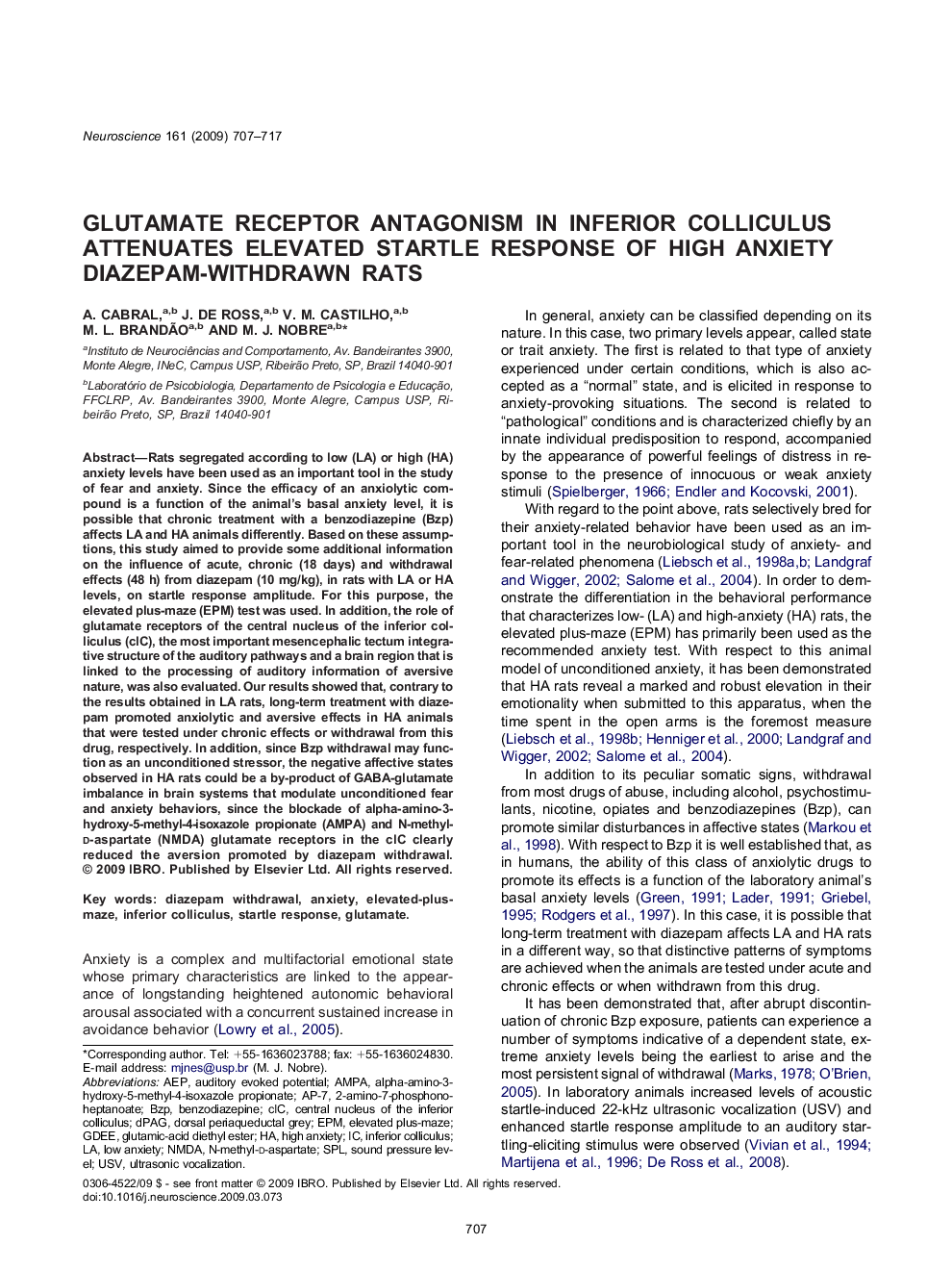| Article ID | Journal | Published Year | Pages | File Type |
|---|---|---|---|---|
| 4340004 | Neuroscience | 2009 | 11 Pages |
Rats segregated according to low (LA) or high (HA) anxiety levels have been used as an important tool in the study of fear and anxiety. Since the efficacy of an anxiolytic compound is a function of the animal's basal anxiety level, it is possible that chronic treatment with a benzodiazepine (Bzp) affects LA and HA animals differently. Based on these assumptions, this study aimed to provide some additional information on the influence of acute, chronic (18 days) and withdrawal effects (48 h) from diazepam (10 mg/kg), in rats with LA or HA levels, on startle response amplitude. For this purpose, the elevated plus-maze (EPM) test was used. In addition, the role of glutamate receptors of the central nucleus of the inferior colliculus (cIC), the most important mesencephalic tectum integrative structure of the auditory pathways and a brain region that is linked to the processing of auditory information of aversive nature, was also evaluated. Our results showed that, contrary to the results obtained in LA rats, long-term treatment with diazepam promoted anxiolytic and aversive effects in HA animals that were tested under chronic effects or withdrawal from this drug, respectively. In addition, since Bzp withdrawal may function as an unconditioned stressor, the negative affective states observed in HA rats could be a by-product of GABA-glutamate imbalance in brain systems that modulate unconditioned fear and anxiety behaviors, since the blockade of alpha-amino-3-hydroxy-5-methyl-4-isoxazole propionate (AMPA) and N-methyl-d-aspartate (NMDA) glutamate receptors in the cIC clearly reduced the aversion promoted by diazepam withdrawal.
